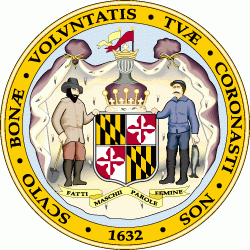

By Kelly O'Connell | Wed, February 21, 24
In the last few days of 2023, the Maryland Department of the Environment (MDE) published the state’s Climate Pollution Reduction Plan, the product of months of collaboration and public input.
The plan builds on the Climate Solutions Now Act of 2022, which aims to reduce greenhouse gas (GHG) emissions by 60 percent from 2006 levels by 2031 and achieve net-zero emissions by 2040, by proposing over 30 sector- and economy-wide policies for implementation. Most importantly, the majority of proposed spending in the plan is dedicated towards supporting low- and moderate-income (LMI) households and small businesses, setting Maryland on track to decarbonize and improve health outcomes for all, especially those that have disproportionately faced adverse health impacts. Here is an overview of some of the building decarbonization initiatives proposed in the plan.
Funding the Transition
Decarbonizing to meet state emissions reduction goals will require an economy-wide approach with initiatives in all sectors such as building energy efficiency and electrification. Decarbonization at this scale necessitates substantial amounts of funding and investment into the state’s economy. Maryland estimates it will need investments of 1 billion dollars annually to implement the suite of proposed policies, coming from a variety of new sources like green revenue bonds and green bank investments. Existing initiatives, such as the Strategic Energy Investment Fund (SEIF) will be expanded to accommodate the necessary investment for energy efficiency and electrification measures. Maryland will activate the already announced 4.9 billion dollars in BIL and IRA funding for the state while pursuing additional federal funding opportunities.
The plan also outlines a new initiative to help fund the transition, a Clean Economy Standard. The standard would provide incentives for clean electricity, especially in overburdened and underserved communities, setting regulatory standards, and improving economy-wide standards. The Clean Economy Standard would create an umbrella policy to comprehensively decarbonize the state, by creating one policy to provide incentives, set cross-sector standards (renewable, appliance, and efficiency), and enable targeted investments to achieve climate goals, similar to California’s cap-and-invest program. The state is still unsure what the policy would look like in the end and they are considering either creating a statewide cap-and-invest program (building from the success of the Regional Greenhouse Gas Initiative) or redistributing revenues from the state Strategic Energy Investment Fund to support rebates and incentives available to residents.
Blending Building Policies
Buildings make up 16 percent of Maryland’s GHG emissions (this includes emissions from space heating, water heating, cooking, and industrial heating processes) and are an essential sector to decarbonize through energy efficiency and electrification. To do so, Maryland plans to expand existing policies and programs and create new ones that will support residents in adopting zero-emission equipment in the buildings where they live and work. The plan proposes making various incentives available to help with this transition, including heat pumps and heat pump water heater rebates. Taking advantage of these, households that become all-electric could save $4,000 annually according to MDE analysis.
Here are some of the building sector policies Maryland seeks to implement or enact:
- Maryland Building Performance Standards (MBPS) that would require local jurisdictions to adopt the latest building codes particularly the IBC, IRC, and IECC for all new construction and major renovations.
- Building Energy Performance Standards (BEPS) are building performance standards (BPS) for buildings of 35,000+ square feet, totaling about 9,000 buildings in the state, to meet a net-zero direct emissions goal by 2040 through benchmarking under EPA’s ENERGY STAR portfolio manager tool. The state has passed legislation enacting BEPS and is working to adopt these standards.
- A Zero-Emission Heating Equipment Standard (ZEHES) would require newly installed heating systems to produce zero on-site emissions by 2030. This includes heat pumps and heat pump water heaters that are already on the market. MDE will initiate a rulemaking process in 2024 and propose draft regulations for the standard in 2025.
- A Clean Heat Standard (CHS) is a performance-based standard to regulate and reduce emissions from building sectors through the regulation of natural gas, heating oil, and propane distributors. MDE is planning to initiate rulemaking for the CHS in 2024 and propose draft regulations later in the year.
Utility Grid Planning and Energy Efficiency Programs
The electrification of buildings must be coupled with energy efficiency, grid reliability and flexibility. Utilities play a key role in ensuring the grid can meet the demands of electrification and in decarbonizing our power sources. Maryland aims to encourage the reduction of fossil fuel combustion in a utility’s portfolio through renewable energy standards, offshore wind, and growing the state’s energy efficiency portfolio. The plan builds on the state’s existing energy efficiency programs, EmPOWER, by calling for legislation that creates GHG reduction goals and mandates that utilities offer beneficial electrification programs (defined as replacing the direct use of fossil fuel that reduces overall lifetime building GHG emissions or customers’ energy costs).
Conclusion
Economy-wide decarbonization is on the way for Maryland. Building on the state’s emissions reduction goals, the plan paves the way for implementation and achievement of Maryland’s climate goals. If Maryland carries out the full suite of policies outlined in the plan, the state can potentially see 135 billion dollars in societal benefits, including the opportunity for 27,400 additional green jobs by 2031, producing tangible results for communities and improving health for all.
Moving forward, the state included provisions that will ensure Marylander’s voices will continue to be heard. MDE will hold ongoing monthly and quarterly advisory groups open to the public and environmental justice listening sessions to allow stakeholders to follow and weigh in on implementation of the plan. Tune into NEEP for more information on next steps with the plan.


